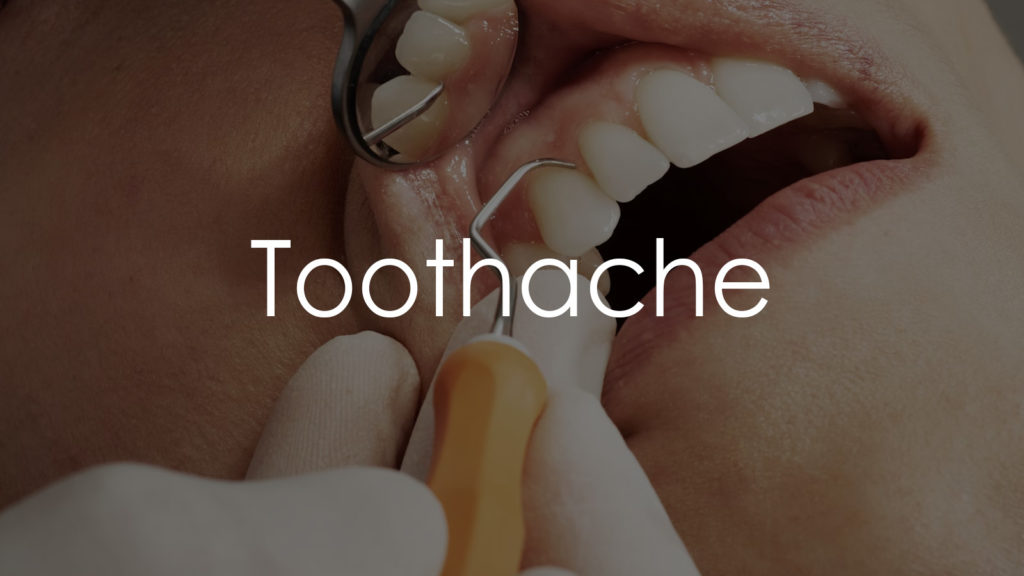Toothache, a common yet often distressing condition, refers to pain in or around a tooth. It can range from mild discomfort to severe pain that interferes with daily activities, such as eating and sleeping. Understanding the nature of toothache, its potential causes, and the diseases it may indicate is essential for effective management and prevention of complications.

Causes and Possible Diseases
Toothache can be attributed to several factors and underlying dental conditions:
- Dental Decay
- The most common cause of toothache is decay that reaches the tooth’s inner layer, the dentin, making the tooth sensitive and painful.
- Dental Abscess
- An infection at the root of a tooth or between the gum and a tooth can lead to abscesses, causing severe pain, swelling, and pus formation.
- Gum Disease
- Conditions like gingivitis and periodontitis involve inflammation of the gums, which can cause pain and lead to tooth loss if untreated.
- Tooth Fractures
- Cracks or breaks in a tooth expose the dentin or pulp, leading to pain.
- Damaged Fillings or Dental Restorations
- Broken or worn fillings or crowns can expose the tooth to hot, cold, and pressure, causing pain.
- Repetitive Motions
- Grinding teeth (bruxism) or chewing hard foods can wear down teeth, leading to discomfort or sensitivity.
- Impacted Teeth
- When teeth fail to emerge through the gums fully, as often happens with wisdom teeth, it can result in pain and infection.
When to See a Doctor?
Seeking timely dental care is crucial for a toothache, especially in the following situations:
- Severe Pain
- If the pain is severe and persists for more than 1-2 days, it’s important to consult a dentist.
- Signs of Infection
- Fever, swelling, and pus draining from around the tooth indicate an infection that requires immediate attention.
- Difficulty Breathing or Swallowing
- These symptoms can indicate a more serious condition, such as a spreading infection.
- Injury to the Mouth
- If toothache follows a physical injury, this could signify fractured teeth or other injuries needing prompt treatment.
- Swelling of the Face or Jaw
- This could be a sign of a spreading infection or abscess that needs urgent care.
- Loss of Appetite or Difficulty Eating
- When pain affects your ability to eat, it can lead to further health complications.
Addressing a toothache early not only alleviates pain but also significantly reduces the risk of developing more serious dental issues. Treatment options may include fillings, root canal therapy, extraction, antibiotics for infection, or management of other oral health conditions contributing to the pain. Regular dental check-ups and maintaining good oral hygiene are key to preventing toothaches and ensuring overall dental health.
Diagnostics
To determine the underlying cause of a toothache, a comprehensive approach is often employed:
- Dental Examination: A thorough examination of the teeth, gums, mouth, jaws, and tongue to check for signs of inflammation, decay, and other dental problems. The dentist may also palpate the jaw and neck to check for swollen lymph nodes.
- X-rays: Dental X-rays can reveal deeper issues not visible to the naked eye, such as decay between teeth, problems in the jawbone, impacted teeth, abscesses, and cysts.
- Pulp Vitality Testing: This involves applying cold, heat, or a mild electrical current to the tooth to determine the health of its pulp, which can help diagnose the cause of toothache.
- Other Diagnostic Tests: Depending on the suspected cause, additional tests, such as checking for sinus issues or screening for nerve damage, may be necessary.
Treatment
The treatment for toothache varies depending on the diagnosis:
- For Decay: The decayed portion of the tooth is removed, and the tooth is restored with a filling.
- For an Abscess: Draining the abscess, performing a root canal procedure if the infection has reached the pulp, or extracting the tooth may be necessary.
- For Gum Disease: Deep cleaning (scaling and root planing) to remove plaque and tartar from beneath the gumline, medication to control infection, and, in severe cases, surgery to restore supportive tissues.
- For Tooth Fractures: Treatment may involve dental bonding, veneers, or crowns to protect and restore the tooth’s integrity.
- For Damaged Fillings or Dental Restorations: Replacing or repairing the fillings or restorations.
- For Bruxism: Custom mouthguards can be provided to protect the teeth from further damage.
- For Impacted Teeth: Surgical removal of the tooth may be recommended.
Conclusion
Toothache is a common dental complaint that can stem from a variety of causes, ranging from decay and infection to injury and gum disease. Prompt diagnosis and treatment are crucial to relieve pain, prevent complications, and preserve oral health. Regular dental check-ups and maintaining good oral hygiene practices, including brushing twice a day, flossing daily, and avoiding excessive sugary foods, can help prevent toothaches and other dental issues. If you experience persistent or severe tooth pain, seeking immediate dental care can ensure that the underlying cause is addressed effectively, allowing for a quicker return to comfort and health.